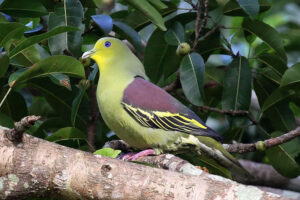About Crimson-Backed Flameback
The Crimson-backed flameback, also known as the Lesser Golden-backed woodpecker, is a stunning bird that is found in South and Southeast Asia. With its vibrant colors and unique behaviors, it is a favorite among bird enthusiasts and photographers alike.
Physical Characteristics Crimson-Backed Flameback
The Crimson-backed flameback has a distinct appearance with a bright crimson red head, nape, and mantle. Its underparts are a rich golden yellow, and it has black wings with white spotting. The male has a red crown, while the female has a black crown. Its bill is straight and pointed, ideal for drilling into trees in search of food.

Habitat and Distribution of Crimson-Backed Flameback
The Crimson-backed flameback can be found in a variety of habitats, including tropical and subtropical forests, open woodland, and plantations. It is native to South and Southeast Asia, including countries such as India, Sri Lanka, Thailand, and Vietnam.
Behavior and Diet of Crimson-Backed Flameback
As with all woodpeckers, the Crimson-backed flameback has a unique behavior of drumming on trees with its bill. This serves both as a form of communication and as a way to find food. They are known to feed on insects, fruit, and occasionally small reptiles or amphibians.
Breeding
Breeding typically occurs between February and May, during which time the Crimson-backed flameback will excavate a hole in a tree trunk. The female will lay 3-4 eggs, and both parents take turns incubating the eggs and feeding the young.
Where You Can Find Crimson-Backed Flameback
- Mitirigala Forest Reserve
- Kitulgala Forest Reserve
- The Peak Wilderness Sanctuary
- Bodhinagala Forest Reserve
- Morapitiya Forest Reserve
- Sinharaja Rain Forest
- Kanneliya Forest Reserve
- Hiyare Forest Reserve
- Udawalawe National Park
- Horton Plains National Park
- Hakgala Botanic Gardens
- Udawattekele Forest Reserve
- Wasgamuwa National Park
- Riverstone Area
Conservation Status
The Crimson-backed flameback is classified as a species of least concern on the IUCN Red List, with a stable population trend. However, like many bird species, it is threatened by habitat loss and fragmentation due to deforestation and human activities. Conservation efforts are ongoing to protect the habitats where these birds reside.
Conclusion
The Crimson-backed flameback is a stunning and unique species of woodpecker that is well worth seeing in person. With its vibrant colors, distinctive drumming behavior, and adaptability to various habitats, it is a true gem of the bird world. As always, it is important to respect their habitats and work to preserve them for generations to come.











